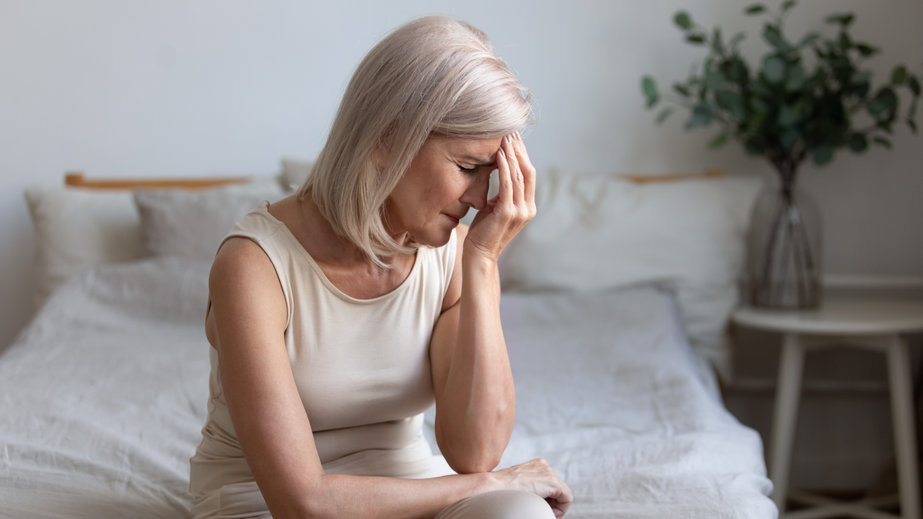Preparing for menopause is much like preparing for the end of a long vacation. You plan your activities, pack your bags and book your flights. But instead of returning home from a vacation, midlife milestones herald a new beginning–literally.
At menopause–which usually occurs between the ages of 40 and 60–a woman’s ovaries stop releasing eggs to be fertilized by sperm, hormones shift, and menstruation ceases entirely. In other words, our bodies shut down their reproductive systems. In addition to fertility issues, women often face night sweats, hot flashes and mood swings as they adjust to their changing hormone levels. And that’s just the beginning! So if you have been wondering how women go through this transition in healthy ways, here are some suggestions on how to prepare for menopause.
1. Know that this is a normal process.
The answer to “what are the signs of menopause” is different for every woman. For some, it’s easy to identify an exact age at which they went through menopause because they’ve always known when their periods ended. Others aren’t aware that menopause has begun until they no longer have the option of becoming pregnant.
Although some women begin experiencing symptoms in their 30s, most women don’t go through significant changes until about two years after their last period.
2. Learn the symptoms.
The symptoms of menopause include:
Allergy
Breast tenderness
Cloudy thinking
Decreased libido
Dental problems
Dizziness
Dry nails
Fatigue
Hair loss
Hot flashes
Memory problems
Migraines
Mood swings
Palpitations
Poor sleep
Tiredness
Vaginal dryness
Weight gain
However, it’s important to remember that every woman is different, so what may be an issue for one woman might not affect another.
If you’re experiencing menopause symptoms but aren’t sure whether they are related to menopause–because your periods are still regular or because you recently had a baby or surgery–talk to your doctor.
3. Get some sleep.
You might think sleep is a bad idea during the day, but studies show that getting enough sleep (eight hours) can help alleviate some menopausal symptoms. Start by going to bed and waking up at the same time every day. If you’re still struggling with insomnia, make sure your environment is dark and quiet, and avoid caffeine before bedtime. If those remedies don’t work, talk to your doctor about other options such as prescription medication or cognitive behavioral therapy.
4. Exercise.
Exercise is good, particularly for menopause, because it helps the body to reduce the symptoms of menopause. Physical activity reduces stress hormones, boosts feel-good endorphins and improves overall health–not just for people in midlife, but also for teens. So try a few simple stretches, go on a walk with a friend or join a Zumba class to start reaping the benefits.
5. Don’t stress.
The Mayo Clinic advises that stress can make menopause symptoms worse, so it’s important to find ways to manage stress.
Manage your stress by:
Listening to music
Taking a walk
Talking with friends, family members or other trusted adults
Practicing deep breathing
Gardening
Writing in a journal
Reading for pleasure
Playing with your dog or cat
Whatever works for you
Practising yoga, tai chi and meditation or other exercise-based practices are all options to help reduce stress. Remember that the more relaxed you are, the less your body will feel compelled to release chemicals that can make menopause symptoms worse.
6. Protect your bones.
Bone loss is common with menopause because of the loss of estrogen. Practising weight-bearing exercises, such as walking, jogging, tennis or dancing, can help strengthen bones.
Eating a healthy diet that contains calcium and vitamin D is another way to protect your bones from bone loss. Beans, tofu, leafy green vegetables, fish with edible bones (such as salmon), shrimp and dairy products are good sources of calcium. Fortified soy milk may provide the same amount of calcium per serving as a glass of milk. Fish oil supplements may contain vitamin D but check the label because not all brands do.
Calcium-rich foods include:
Yogurt (choose low fat)
Dark leafy greens such as spinach and kale
Almonds
Fatty fish such as salmon, sardines and tuna
Oranges and orange juice fortified with calcium
Oatmeal
Broccoli or cauliflower
Fortified milk
Egg yolks
Liver
Protecting your bones is important because strong bones are less likely to break. If you don’t eat enough calcium and vitamin D, your body may take calcium from your bones. It can lead to weak bones (osteoporosis).
7. Think about hormone therapy.
Women are considered postmenopausal after they reach age 60. After menopause, the ovaries produce less estrogen. Hormone therapy can relieve hot flashes and other symptoms.
Some women may still get relief from symptoms if they use estrogen alone or estrogen plus progestin, the same hormones found in many birth control pills.
Talk to your health care provider about whether hormone therapy might help you feel better. If so, they will help you figure out the best available option for managing symptoms without increasing the risk of cancer or other problems that come with taking estrogen alone.
If you’re going through menopause or will be soon, don’t deal with it alone. Schedule an appointment with Shady Grove Gyn Care today.

